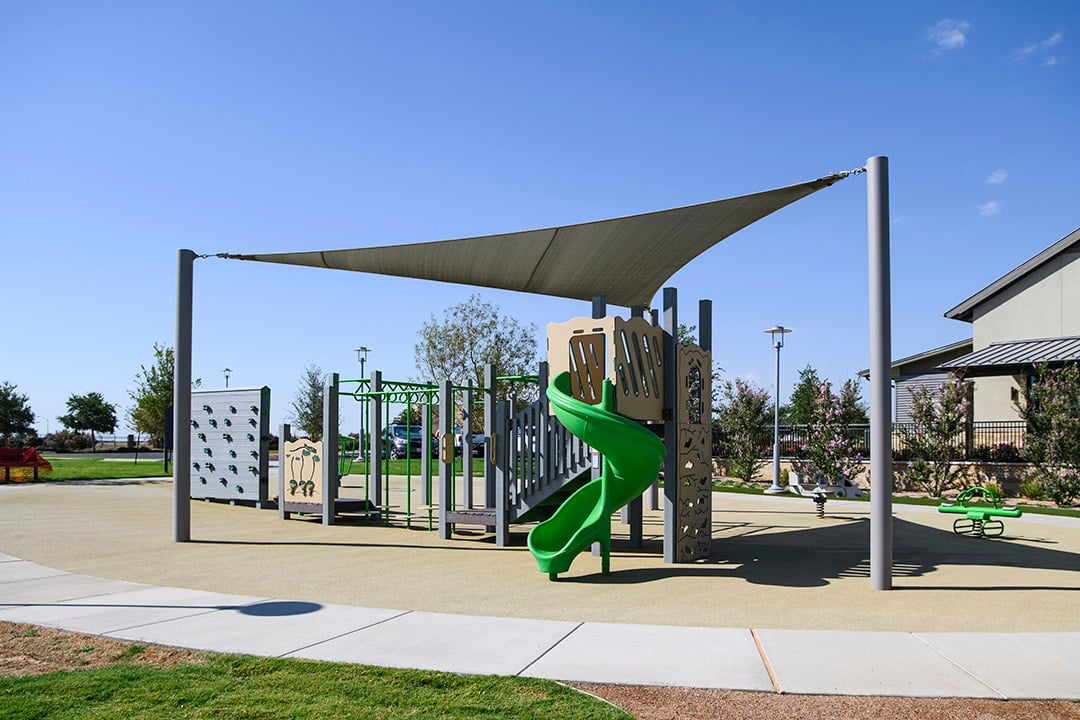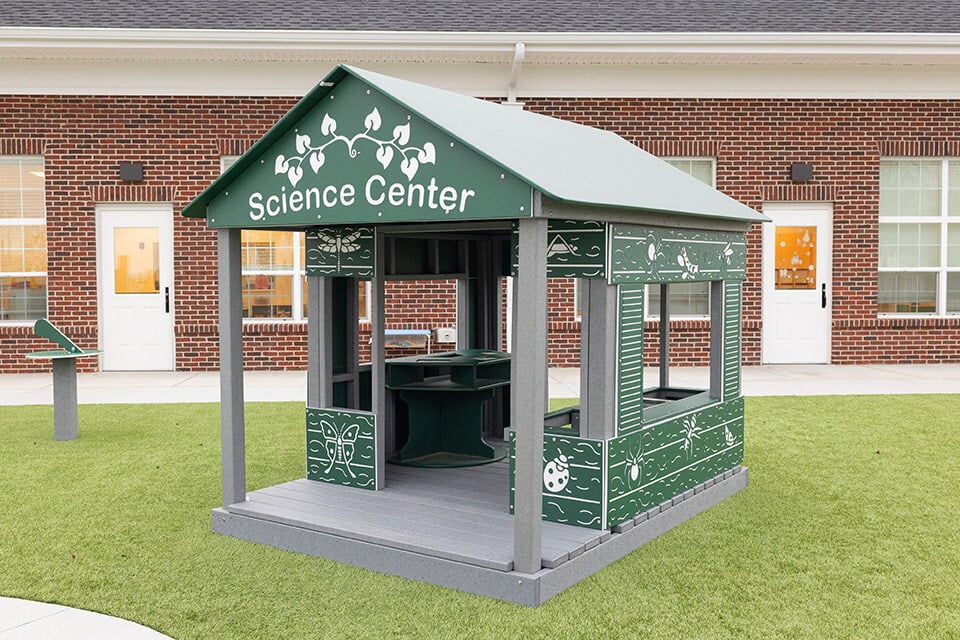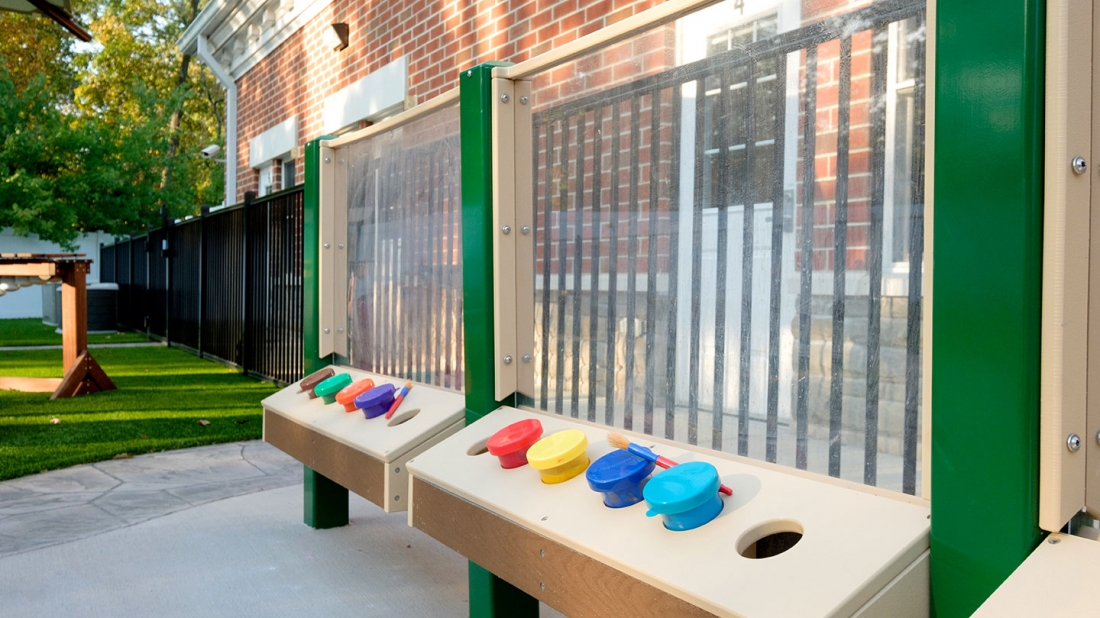Safety Surfacing: What to Put Under Your Playground Equipment
An important step in any play environment design is the choice of safety surfaces. Varieties of surfacing options are available to put under and around your playground equipment. Your choice of playground safety surfacing material will most likely be dependent on several factors:
- Your initial and long-term budget
- Yearly maintenance and upkeep
- Age of the play equipment's users
- Accessibility of the surfacing material
- Color options available by type
- Critical fall height and use zones
- Desired look and feel of the environment
Surfacing options are available for every playground project – no matter the look, feel, or theme of your play environment. However, not all surface materials are equal. Some materials should never be found on a playground including sand, pea gravel, asphalt, cement, grass, or soil. Only choose products with appropriate impact attenuation or shock absorption to help protect children while they are playing. Now that you know what not to put under your equipment, let’s take a look at what materials are best suited for playgrounds. Remember, you don’t have to choose just one! Combining surfacing materials in a single play environment is a great way to separate play areas, add visual interest to your environment, and provide different tactile experiences.
Types of Playground Surfacing:
Engineered Wood Fiber

Engineered Wood Fiber (EWF) is the go-to surfacing material for initial affordability. Engineered wood fiber is manufactured from size-controlled softwoods and hardwoods, is non-toxic, and does not contain paint, chemicals, or any additives. It contains minimal bark and is free of twigs, leaf debris, and other organic material. Sometimes referred to as playground bark, this natural-looking surface choice requires ongoing maintenance and occasional topping-off during its lifetime. Continual maintenance helps to maintain the material depth, keeping this option compliant with applicable standards. Need another reason people are attracted to surfacing their playground with engineered wood fiber? It can be installed very quickly and, if installation instructions are followed carefully, it can be installed by volunteer labor. Additionally, it provides a cooler surface than other loose-fill products.
Loose Fill Rubber Mulch

Of all loose fill options, recycled rubber surfacing offers the best impact-absorbing properties. This rubber chunk ground material is manufactured from 100 percent recycled tire rubber, making this option environmentally friendly. Recycled loose-fill rubber, also known as rubber mulch, can be more economical in the long run compared to its loose-fill wood counterparts since it doesn’t decompose, requiring lower maintenance, top-offs, and replacement. Another major bonus? It is unique among loose-fill surfacing because of the available color choices, providing an aesthetically pleasing playground surface. Looking for a more permanent rubber mulch solution? Check out the bonded rubber option below.
Bonded Rubber Mulch

Bonded rubber mulch is an attractive, seamless surface that uses clean, shredded recycled rubber to create an environmentally responsible safety product. Unlike loose-fill rubber mulch, this rubber is bonded together using a polyurethane binding agent making this unitary surface choice highly accessible. This surfacing option is poured in place at a thickness that is determined by your play structure’s design to ensure that the surface meets critical fall heights. Bonded rubber is offered in a variety of colors and can give your play environment a natural look. Even more, it offers mid-to-low maintenance and durability that lasts. Installation of bonded rubber must be performed by a technically trained certified installer.
Rubber Tiles

Rubber tiles provide a unitary surface with great shock absorption, low maintenance, and high accessibility. They typically come in various thicknesses to meet critical fall heights and are available in multiple colors. Colors can be mixed and matched to create fun patterns and designs. Although rubber tiles may have a higher price tag, you’ll find the ability to repair single damaged tiles rather than the whole playground surface a great benefit.
Poured In Place Rubber

Poured-in-place rubber surfacing, also known as PIP, is one of the best attenuating surfaces for accessibility and longevity. It features two layers, with the bottom layer being clean, recycled rubber and the top layer being bonded rubber granules that provide a ½” thick wear layer. The top layer is available in a wide range of colors that can be mixed, matched, and designed into graphic elements, shapes, and themes. The initial price of poured-in-place rubber is higher but with little-to-no maintenance, the ability to keep this surface clean, and the longevity of the product, you will find its benefits outweigh the cost. This surfacing option must be installed over asphalt, concrete, or compacted stone by a trained professional.
Synthetic Turf

Are you looking for the look and feel of real grass without the unwanted maintenance? Look no further than synthetic turf. Turf is an engineered grass product that offers height-appropriate impact attenuation perfect for playground environments. Turf typically consists of a top layer, the actual turf fiber that looks like blades of grass, and a cushion layer. Combined, these two layers can give fall attenuation properties up to 12’! This surfacing product typically comes in two options: turf with infill and turf without infill. Infill, a loose granule, helps to discourage the flattening of the grass blades and should not be used in a play environment that is designed for infants and toddlers. Synthetic turf offers a low-maintenance surfacing option that is UV resistant and provides a cooler temperature than other unitary surfaces.
If you need a little more guidance on which surface type would work best for your budget and play equipment, we can help.



